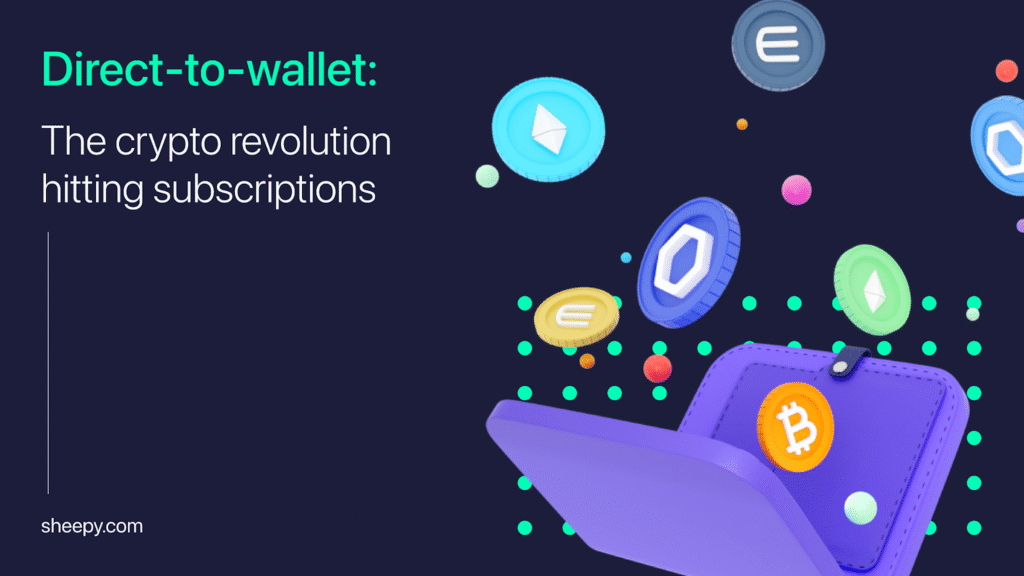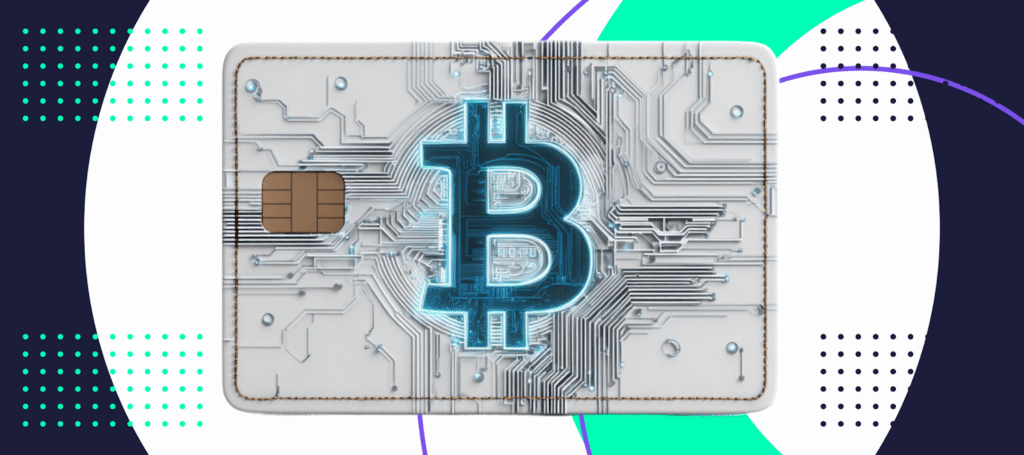Direct-to-wallet: The crypto revolution hitting subscriptions
Last Updated on 18 September 2025

As digital creators grow increasingly frustrated with platform fees, account restrictions, and opaque payout systems, many are turning to decentralized alternatives. The rise of blockchain-powered tools now allows artists, podcasters, journalists, and educators to accept support directly from their audiences – without intermediaries. At the heart of this shift are crypto donations, which offer borderless, censorship-resistant, and instant value transfers that redefine what sustainable creator income looks like.
From crypto wallets to integrated payment gateways
At first, crypto donations were simple. A fan would copy a wallet address and send a token. But for most people, that process feels confusing. Wallets have long strings of letters and numbers. One mistake can send funds to the wrong place. Many supporters worry they’ll get it wrong. Even when they want to give, they hesitate. That’s why donation buttons on websites work better. But with crypto, those tools weren’t always available. Now, things are changing. More services are building bridges between wallets and real users. Creators want tools that feel as easy as PayPal but run on blockchain rails. That’s what the next generation of crypto gateways is trying to do.

These crypto payment processors allow people to send crypto donations without needing deep technical knowledge. They also help creators track payments, generate invoices, and offer better UX. For recurring support, automation is key. It’s not enough to say “send coins here”. Supporters want one-click flows, and creators want to see where the money goes. This is where modern platforms come in. Some of them provide full-stack payment systems that plug into websites or apps. Sheepy crypto payment gateway, for instance, offers tools for businesses and creators to accept crypto payments, including stablecoins like USDC and USDT. Features like auto-conversion, analytics, and multi-chain support are becoming standard.
These aren’t just donation widgets. They’re payment layers built for the future.
With these tools in place, crypto donations feel less like a hack and more like a real business option. No one wants to spend hours setting up wallets and checking transaction hashes. They want smooth, fast, and error-free systems. That’s why adoption grows fastest when the experience feels familiar. For many creators and companies, these gateways are the missing piece. They turn crypto donations from a technical side project into a working part of their income stream. When tools are built for real-world use, everyone benefits. And for creators, it means more time focusing on their craft and less time managing spreadsheets and gas fees.
The subscription fatigue: Why creators are leaving traditional platforms
Many digital creators once saw platforms like Patreon or Ko-fi as the best way to earn money online. These platforms made it easy to ask fans for support. But over time, things started to change. More fees appeared, rules got stricter, and payments became less reliable. For many creators, the system began to feel broken. They started losing control over their income, and their audiences began to notice. Even popular creators sometimes saw their accounts frozen without clear explanation. That left them with no way to pay bills or talk to their supporters. Trust began to fade, and creators started searching for something better.
People want simple tools that let them earn directly from their fans. They don’t want to lose 10% or more to payment processors. They don’t want to wait a week to get paid or worry about chargebacks. In some cases, they want their audience to stay anonymous, especially when covering political or sensitive topics. This is where crypto donations started to look like a better choice.
These payments don’t rely on a bank or a platform. They go straight to the creator’s wallet, fast and without borders. In many cases, the fees are much lower too.
As more creators face demonetization, they see crypto donations as a safer path. These payments offer stability in a space that often feels uncertain. They give creators control over when and how they get paid. Most importantly, crypto donations reconnect creators with their audience in a direct, honest way. There’s no middleman to say yes or no. Just two people – one offering value, the other giving thanks. It’s a quiet shift, but one that’s changing how creative work gets funded online.
What crypto donations offer that Web2 subscriptions can’t
Web2 platforms helped creators connect with fans, but the way they handle money is full of limits. Payment delays, high transaction fees, and sudden rule changes often break the trust between creators and their supporters. Many creators are tired of watching their income disappear into the hands of third-party services. Even when a fan wants to give a dollar, most of it doesn’t reach the creator. On top of that, platforms can ban accounts without warning. This leaves creators locked out of the systems they depend on. It becomes clear that relying on centralized tools means giving up control. That’s where crypto donations start to stand out.
When someone sends money through crypto donations, there’s no waiting period or approval step. The payment goes from one wallet to another, often in seconds. It doesn’t matter if the sender is in Canada or Kenya. There are no borders when it comes to crypto. Stablecoins like USDT and USDC also help remove price swings, which makes creators feel safer using these tools. What’s more, fans can give support without revealing their identity. That’s useful for causes that may be controversial or where privacy matters. Compared to the friction and control of Web2, crypto donations offer a smoother, faster way to support creators with fewer risks.

In some parts of the world, Web2 platforms are blocked or simply not available. Credit cards aren’t always an option, and PayPal doesn’t serve every region. But crypto donations work as long as someone has internet access and a wallet. That makes it easier to build global audiences without leaving anyone out. People who were once left behind by banks or big tech can now be part of a support system that runs on code, not permission. As more creators explore this path, crypto donations are no longer seen as strange or experimental. They are becoming a normal part of how people say “thank you” in the digital world. In many ways, they don’t just replace old tools – they fix the parts that were never fair to begin with.
Crypto donations as the foundation of Web3 patronage
The idea of fan support has always been part of the internet. People enjoy helping the voices they care about. But the way support happens is now changing. With crypto donations, the system no longer depends on accounts, subscriptions, or credit cards. Instead of clicking a “subscribe” button, a fan can send value using their wallet. No name, no sign-up, no form to fill. That small shift has big meaning. It creates a direct tie between two people, and it works anywhere in the world. This kind of exchange opens the door for a new kind of patronage – one where control sits with the creator and the community, not the platform.
As more creators adopt Web3 tools, they see how flexible crypto donations can be. Instead of offering just one way to give, creators can connect donations to access rights. A simple token can unlock content, provide voting power, or even open a private group chat. Fans aren’t just giving money – they’re becoming part of something. In some cases, donations are pooled into shared wallets, run by communities rather than companies. This gives rise to DAO-like groups, where funding and decision-making are both shared. All of this builds on the same base: the ability to send crypto donations freely, without friction or delay.
Live content platforms are starting to test new ways of using crypto donations, including recurring payments and programmable tipping. With smart contracts, creators can set up rules for how funds are handled. For example, a portion of every donation might go to a collaborator, or to a savings wallet. These models were hard to build in Web2. But in Web3, they come baked into the system. As the tools improve, creators will need less technical skill to use them. They’ll be able to focus on what they do best: making things people love. In that world, crypto donations won’t just be a side option. They’ll be the foundation of how value moves between creators and audiences.
The new direct-to-audience creator economy
Something important is happening in the world of online creation. More and more people are choosing to support the voices they care about without going through big platforms. The old tools still work for some, but the cracks are easy to see. Payment delays, sudden bans, and high fees have made creators question how much control they really have. That loss of control has pushed many to search for better systems. What they are finding is a new way to connect with their audience – one that doesn’t need middlemen or approval from someone else.
This change is not just about money. It’s about trust, freedom, and being able to build without fear of losing everything overnight. When a creator knows they won’t be shut down for saying something unpopular, they work with more confidence. When a supporter knows their help matters and gets there fast, they feel closer to the work they love. These small changes shape a bigger movement. It’s one that puts people first, not platforms. Every creator wants to feel secure in their work. Every audience wants to feel their support counts.
In this new system, everyone has a role. The artist creates. The audience responds. The tools help them meet in the middle. No long delays. No gatekeepers. Just a clear, open path between the two. That’s the future now taking shape – not as a trend, but as a lasting shift in how creativity gets rewarded online.